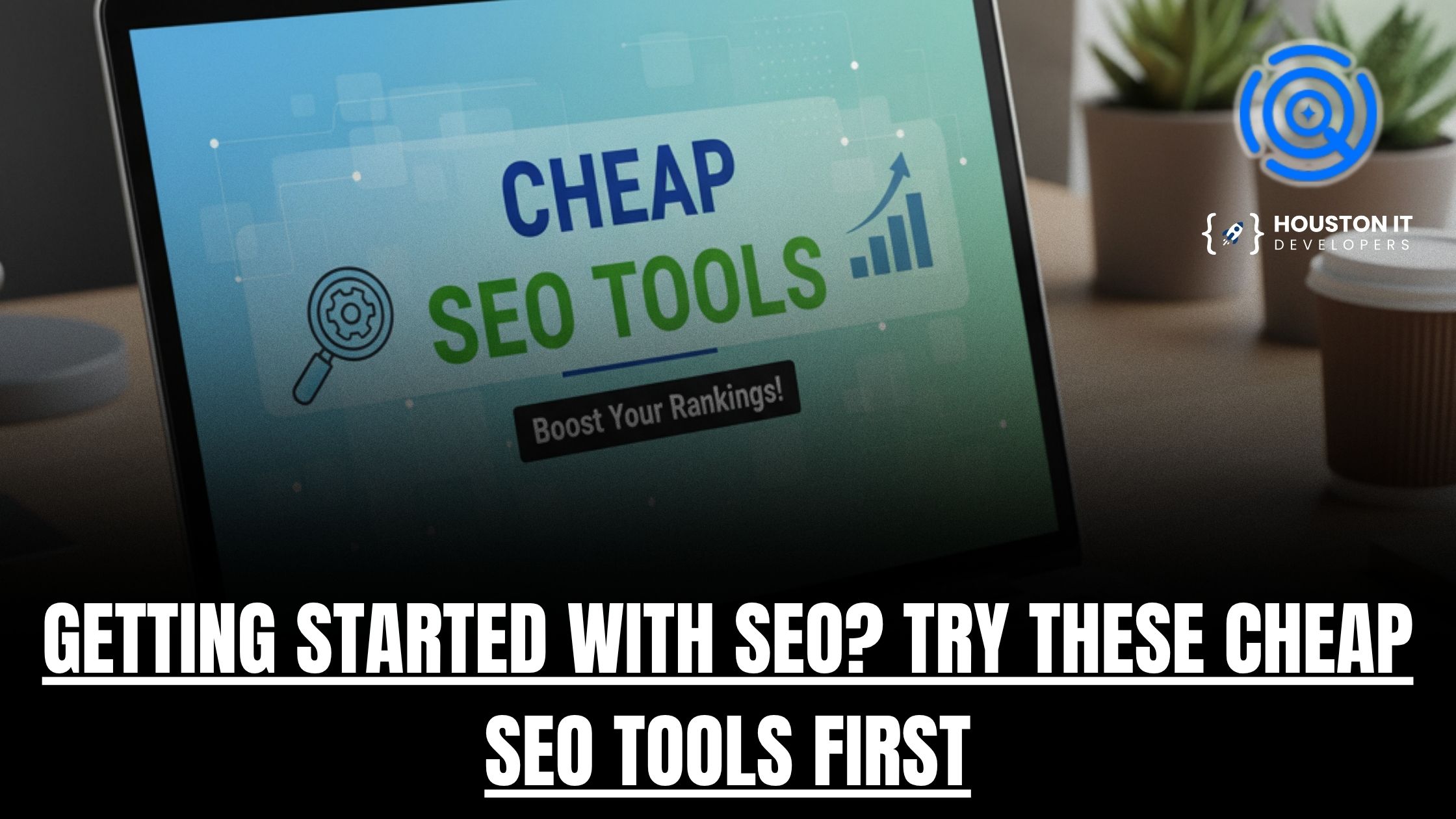Have you ever asked yourself how to add keywords to website content so that it actually ranks? More than 53% of all website traffic comes from organic search, yet most users never go past the first page of Google results. That means poor keyword placement can cost you valuable visibility and potential customers.
The challenge is knowing the best places to put keywords on your site without falling into outdated practices like stuffing. Many website owners also struggle to build a low competition keywords list that balances ranking potential with natural content flow.
In this blog post, you will learn why keywords still matter, where to place them for maximum impact, how to use them naturally, and pro tips that professionals follow. By the end, you will have a clear strategy to make your website more search-friendly and engaging for readers.
Why Keywords Still Matter in SEO
Keywords continue to play a vital role in how websites rank, even as Google’s algorithms become more advanced. They act as signals that help search engines connect user queries with your content. If you know how to add keywords to website pages correctly, you increase the chances of appearing on the first page of search results, where nearly all clicks happen. Without a thoughtful keyword strategy, even high-quality content risks being overlooked.
Here are a few reasons keywords remain essential in modern SEO:
- Keywords help define search intent and ensure your content matches what users are looking for.
- Using variations and related terms creates a broader semantic field, which Google rewards.
- Mapping out places to put keywords on your site improves indexing and content clarity.
- Building content around a low competition keywords list can give smaller sites an edge over competitors.
In short, keywords are no longer about repetition but about context. When you blend your main keyword with supporting terms and carefully select where they appear, you make your content both search engine friendly and reader focused. This balanced approach ensures long-term visibility and authority.
Where to Place Keywords on Your Website
Selecting the right keywords is only half of the SEO equation. To maximize their effectiveness, you need to know the strategic places to put keywords on your site. Placement is what tells Google exactly what your page is about, and when done properly, it improves both rankings and user engagement.
If you understand how to add keywords to website content in the right spots, you create a stronger signal of relevance without overloading your page.
| Placement Area | Why It Matters |
| Page titles | Your title tag is one of the first elements search engines read. Including your primary keyword here helps define the topic of the page and improves your chances of ranking for that query. |
| Meta descriptions | While not a direct ranking factor, keywords in meta descriptions increase visibility in search results. They encourage users to click because the highlighted terms match their search intent. |
| Headings (H1, H2, H3) | Using keywords in headers structures your content logically. It also tells both search engines and readers how topics flow across the page. |
| URL structure | A short, descriptive URL with a keyword is easier to crawl and signals page relevance. It also looks cleaner and more trustworthy to users. |
| First 100 words of content | Introducing keywords early reinforces what the page is about. This helps Google quickly connect the topic with the query while reassuring readers they are in the right place. |
| Alt text for images | Search engines cannot “see” images, so alt text is essential for context. Adding relevant keywords here supports indexing and improves accessibility. |
| Internal anchor text | Linking to other pages with keyword-rich anchor text strengthens topical authority. It also helps distribute link equity across your site for better overall SEO performance. |
Placing keywords in these areas creates a structured framework that search engines can interpret with ease. At the same time, it ensures users find your content clear, relevant, and engaging, which supports both rankings and long-term trust.
How to Add Keywords Naturally Without Stuffing
Keyword stuffing was once a common SEO trick, but today it can push your page down in rankings instead of lifting it up. Search engines use advanced algorithms to understand context, so repeating the same phrase endlessly only signals poor-quality content.
The key is learning how to add keywords to website copy in a way that feels natural to the reader and is still clear to Google. When done correctly, your keywords will enhance your content rather than distract from it.
Here are specific ways to achieve natural keyword integration:
- Use variations within sentences: Instead of repeating how to add keywords to website five times in a row, alternate with natural phrases such as adding keywords to your website or placing keywords on a page. This tells Google you are addressing the same topic without making it sound robotic.
- Answer real questions around your keyword: If users search for places to put keywords on your site, include a paragraph that directly explains keyword placement areas like titles, meta descriptions, and image alt text. You’ll meet user intent while still ranking for related queries.
- Insert keywords into examples and case studies: For instance, you could write, “A blog targeting gardening tips can benefit from building a low competition keywords list that includes phrases like organic soil for beginners or best indoor plants for apartments.” This shows readers how to apply the keyword strategy in real scenarios.
- Blend long-tail keywords into subheadings: A heading such as Best Places to Put Keywords on Your Site for Local SEO reads naturally, adds context, and allows you to rank for multiple search terms at once.
- Polish with the read-aloud test: If you read your content and the keyword feels forced, replace it with a synonym or restructure the sentence. For example, instead of “How to add keywords to website is important for SEO,” a smoother version is “Learning how to add keywords to your website is crucial for better search visibility.”
Writing naturally is not just about avoiding penalties; it is about creating a smooth reading experience that builds trust. When you focus on variations, user intent, and real-world examples, you transform keywords from awkward additions into powerful signals that boost relevance and engagement. For more practical strategies, check out this guide on improving website visibility for eCommerce.
Pro Tips to Optimize Keywords Like an SEO Professional
Professional SEOs understand that keywords are not just individual words to be scattered throughout a page. They use a strategic, data-driven approach to ensure that every keyword supports broader visibility and aligns with user intent. Knowing how to add keywords to website content with precision separates beginner tactics from expert-level optimization.
Here are advanced methods that professionals rely on:
- Cluster your keywords: Instead of targeting one phrase per page, group related terms and cover them in a single piece of content. For example, if your core keyword is how to add keywords to website, supporting terms might include places to put keywords on your site or low competition keywords list. This creates topical authority and makes your page more comprehensive.
- Use semantic search signals: Google looks for context, not just exact matches. Adding synonyms, variations, and NLP-driven entities (like “search intent,” “SEO rankings,” or “meta tags”) tells search engines your content covers the topic thoroughly.
- Prioritize intent over volume: Ranking for one high-volume keyword may be harder than capturing traffic from several lower-volume phrases. Building a low competition keywords list gives you realistic opportunities to rank while still attracting qualified visitors.
- Leverage internal linking: When you link between related pages on your site using keyword-rich anchor text, you distribute authority and make it easier for search engines to crawl. For example, linking a blog about content strategy to one about keyword placement strengthens both.
- Update regularly: Keyword trends evolve as search behavior shifts. A page optimized two years ago may be outdated today. Refreshing content with updated keywords and adding new long-tail terms helps maintain rankings and keeps your content competitive.
Applying these practices turns keyword optimization into a strategic system rather than guesswork. When you approach keywords like a professional, you create content that consistently ranks, adapts to algorithm changes, and delivers long-term search visibility.
To take it further, explore this resource on affordable SEO tools for small business that can support your keyword strategy.
Take Your Keyword Strategy Further with OnPageSEO.ai

If you’re ready to move beyond basic optimization and want a smarter way to manage your on-page SEO, OnPageSEO.ai is the tool to try. This AI-powered Chrome extension gives you instant insights into your site’s performance and shows you the exact places to put keywords on your site for maximum impact.
Whether you’re testing new titles, auditing links, or building a low competition keywords list, OnPageSEO.ai saves you hours of manual work.
| Feature | What It Does |
| Instant SEO Audits | Run one-click health score assessments with AI-powered, color-coded recommendations for quick fixes. |
| AI Title & Meta Description Generator | Create optimized titles and descriptions instantly by analyzing your page content. |
| Header Structure Audit | View all H1–H6 headers in order with an interactive map, and receive suggestions to improve structure. |
| Link Analysis | Get a complete overview of internal and external links, including anchor text audits and SEO-focused insights. |
| Image SEO Audit | Check image titles, alt text, and formats, plus convert images to WebP for faster performance. |
| Keyword Analysis | Track keyword distribution, density, and total word count, and export data to CSV for deeper insights. |
Pricing is flexible. Start with the Hobby plan for free to access instant audits, link analysis, and header checks. Upgrade to Pro for $4.99/month to unlock unlimited AI title and meta description generation, full Google Search Console insights, and ongoing feature updates.
SEO professionals and small businesses alike use OnPageSEO.ai to work faster, smarter, and more effectively. You can add the extension to Chrome today or start with a free trial to see how it transforms your keyword strategy.
Frequently Asked Questions
What is an example of a keyword on a website?
A keyword is the search term that people type into Google to find information. For example, if you run a bakery in Melbourne, a keyword might be “best sourdough bread Melbourne”. Using this phrase naturally in your headings, product descriptions, and meta tags helps search engines understand what your page is about.
Can I do SEO myself?
Yes, you can. Many website owners start with the basics like writing quality content, adding keywords, and improving site speed. Tools such as OnPageSEO.ai make the process easier by giving you real-time SEO audits, keyword insights, and optimization suggestions without needing an agency.
How do I do SEO for my website?
Doing SEO for your website means making changes that help search engines understand your content and users find value in it. This usually starts with keyword research, then moves to optimizing your titles, descriptions, and headers so they align with what people are searching for. Creating high-quality, useful content is essential, as is making sure your site loads quickly and works well on mobile devices. With OnPageSEO.ai, you can quickly scan your site and get practical, step-by-step suggestions that show you exactly what to fix and improve.
Final Thoughts on How to Add Keywords to Website
Adding keywords to your website is not about stuffing phrases into every paragraph. It is about understanding intent, placing them strategically, and making content flow naturally. Keywords still act as signals that guide search engines, and when you use them in titles, headings, URLs, and meta descriptions, you set your pages up for higher visibility. By balancing relevance with readability, you create content that works for both users and algorithms.
Now that you know where and how to add keywords like a professional, the next step is to put this strategy into action. OnPageSEO.ai makes the process simple with instant audits, AI-powered recommendations, and tools that save you hours of manual work.
Start optimizing smarter today. Install OnPageSEO.ai on Chrome for free and turn your keyword strategy into a real competitive advantage.



